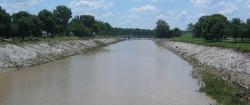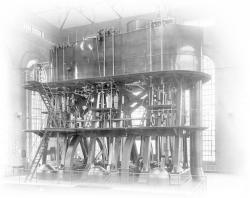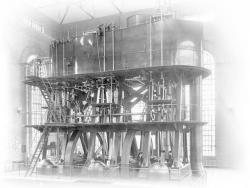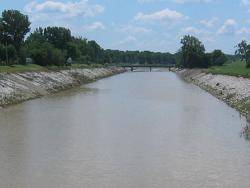In 1915, a tropical storm dropped nearly 11 inches of rain on St. Louis in just 17 hours, causing a devastating flood. Claiming 11 lives and the homes of 1,025 families, the flood focused public and government attention onto the problems of the river.
Sewage


At the site of the first water pumping station providing water and sewage systems to the City of Erie in 1868, the Chestnut Street Pumping Station houses one of the largest steam engines, which pumped 20 million gallons a day. The triple-expansion steam reciprocating engine, which pumped water from the filter plant to the city reservoir, was typical of those used in municipal water pumping stations throughout the country during the late nineteenth and early twentieth centuries.
Innovations

At the site of the first water pumping station providing water and sewage systems to the City of Erie in 1868, the Chestnut Street Pumping Station houses one of the largest steam engines, which pumped 20 million gallons a day. The triple-expansion steam reciprocating engine, which pumped water…
Read More
In 1915, a tropical storm dropped nearly 11 inches of rain on St. Louis in just 17 hours, causing a devastating flood. Claiming 11 lives and the homes of 1,025 families, the flood focused public and government attention onto the problems of the river.
In the early 1900s, St. Louis…
Read More

